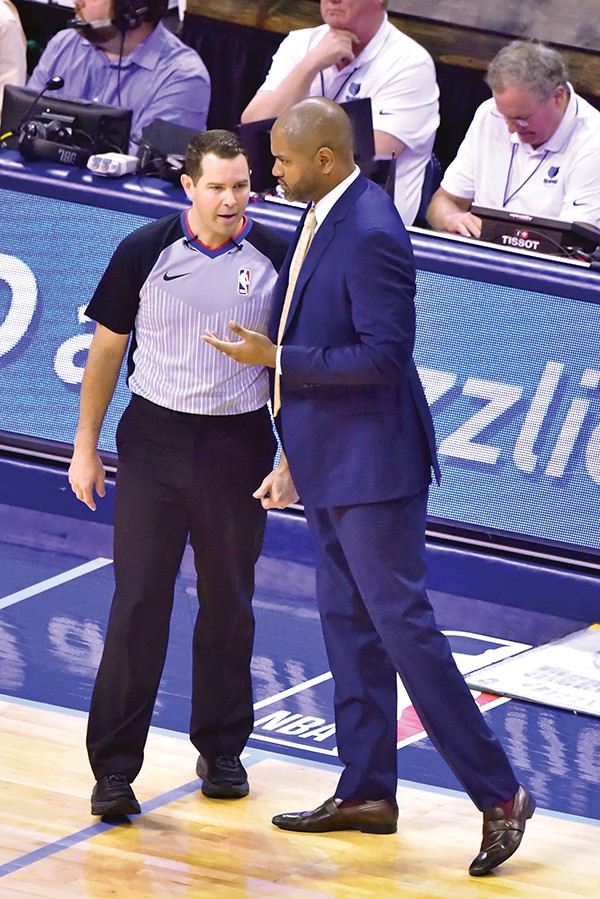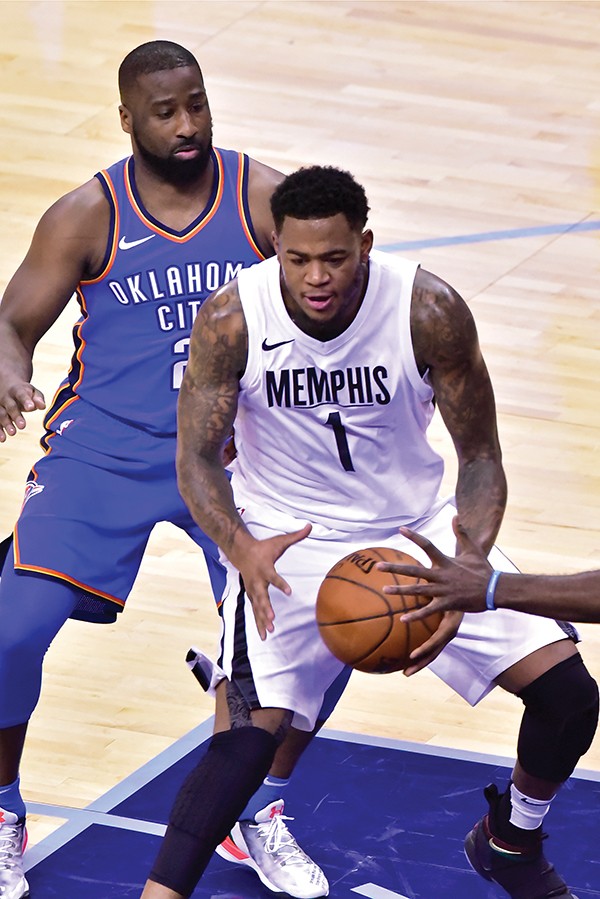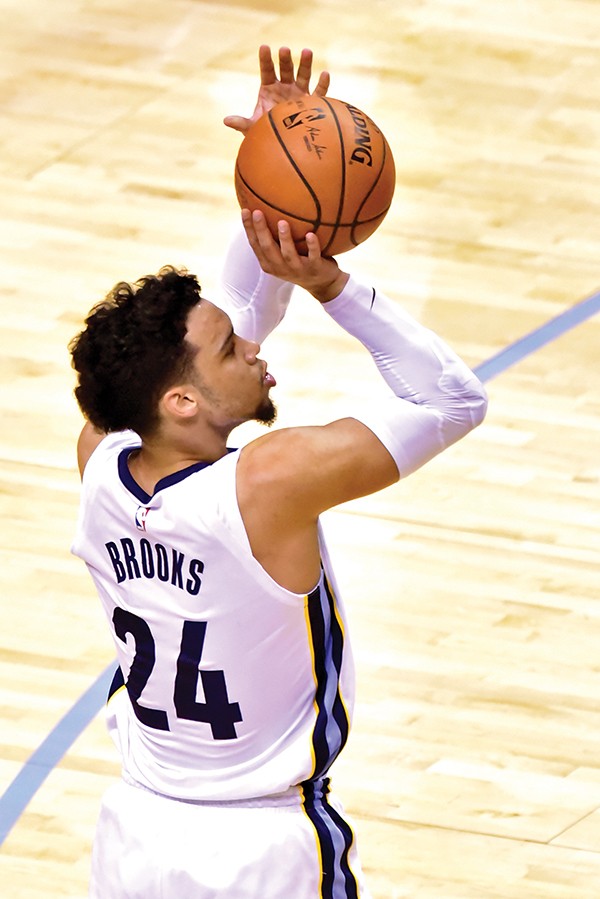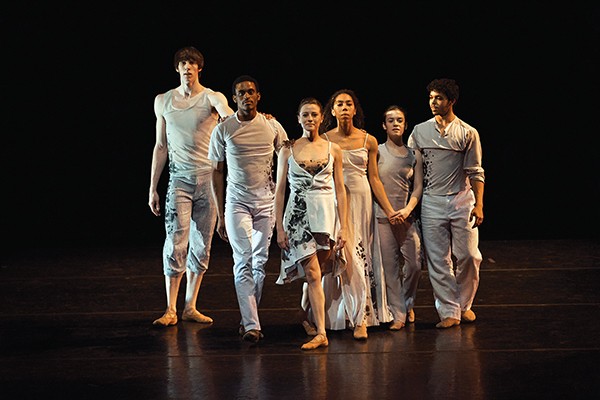Grizzlies fans have had it pretty easy since the 2009-10 season: Since acquiring Zach Randolph, the team has been in the playoffs every season but his first one, and in that one, they were only eliminated after Marc Gasol went down with an injury. For seven seasons in a row, the Grizzlies have been playing well into April, and sometimes well into May, and even in the years where it was clear they wouldn’t advance — such as 2016’s injury-gutted roster or last year’s hopeless matchup against the Spurs that somehow went six games — getting there felt like enough for the fanbase. They just wanted the Grizzlies to be competitive.
This year, the Grizzlies are not competitive. They’re not even close to competitive; at the time of this writing, they’re the fourth-worst team in the Western Conference (only because Phoenix, Dallas, and Sacramento have more losses; all four teams have only 18 wins). This is the worst Grizzlies season since 2008-09, when they won 24 games. They fired David Fizdale, only 18 months after hiring him. Mike Conley has only played in 12 games. Chandler Parsons has only played in 27. Just about everything that could go wrong for them has gone wrong, and now it’s clear that they’re far more interested in developing young players and trying to maintain a good draft pick than actually winning games.
It’s not a pretty picture. Judging from Internet ire, many people don’t understand why the Grizzlies are “tanking” the season away — losing on purpose — but regardless, they certainly didn’t enter the season expecting to be this bad. As fans of a plucky underdog franchise that has no pluck and is certainly dogging it, why does it matter what happens the rest of the season? Why even watch these games? Why not just do something else, like watch the Tigers or drink on a patio somewhere or take up cross-stitching? Here are five reasons:
 Photographs by Larry Kuzniewski
Photographs by Larry Kuzniewski
JB Bickerstaff
1. They’re More Fun Than They Should Be
There is not a column in the NBA standings for “moral victories,” but if there were, the Grizzlies would have racked up quite a few already. They may not be winning games, but they’re certainly not getting blown out with the regularity one might expect from a team no longer interested in playing basketball. This is not as true after the All Star Break as it was before; they lost the first two games back by a combined total of 49 points. But that doesn’t mean interesting things aren’t happening.
If you listen to what interim head coach JB Bickerstaff says after losses this year, he’s very consistently delivering one message: We are trying to build a culture of players who play a certain way, and that takes years. Little glimpses of that culture are available in every game: the ball movement is sometimes phenomenal. The defense sometimes holds when normally it wouldn’t. The young players — especially Jarell Martin and James Ennis III before he was traded to Detroit at the deadline — are getting better at transition play-making, and occasionally that leads to monster dunks.
Watching a bad NBA team is all about finding things to enjoy at the micro level, because the macro level is garbage. Fans who only want the Grizzlies to win probably stopped watching some time around Thanksgiving. Those of us who are left have to take solace in little plays, in neat developments, in solid comeback attempts that fizzle out before the Grizzlies get over the hump. There are fun moments in most of these games; you just have to watch for small victories instead of, well, victories that actually count.

Jarell Martin
2. Dillon Brooks and Ivan Rabb
The Grizzlies’ two rookies, both drafted in the second round last offseason, have both been surprisingly good, and both look like major wins for the Griz front office staff.
Brooks has proven himself to be scrappy, unafraid of the big moment, a cerebral player who sometimes makes things happen through sheer … shall we say “fortitude.” He’s played more minutes than any Griz rookie in recent memory with the possible exception of Andrew Harrison (more on him farther down the list): 1,634 minutes spread across a team-leading 58 games, 50 of which he’s started. Brooks’ development has been fun to watch, and the whole league has taken notice. A native of the Toronto area, he was selected to play on Team World in the Rising Stars Challenge at All Star Weekend, the new-fangled version of the old Rookie/Sophomore Game. Not many second-round guys get to play in that game. The Grizzlies struck paydirt with Brooks.
Ivan Rabb is a bit farther away from having the kind of NBA impact that Brooks has had so far, but he’s shown considerable promise. Rabb is undersized, but he makes up for it (mostly) with his skill, and while it’s a little hard to tell whether he’s a center or a power forward, it’s clear that he has the tools to become a rotation player if he can get stronger. Rabb was projected to be a lottery pick before returning to Cal for an ill-advised second season, and it’s clear that he (and Brooks alike) have outsized talent for their humble draft positions.
Both of these guys will be NBA players, and they’re both growing in small ways every time the Grizzlies take the floor. Guys only learn now to be NBA players by playing minutes in NBA games — something previous Griz coaches haven’t always seemed to understand — and it’s fascinating to watch guys like Rabb and Brooks add new weapons and new strategies to their respective toolkits each time they touch the ball.

Dillon Brooks
3. Which Young Guys Will Make It?
Brooks and Rabb aren’t the only young Grizzlies players worth watching, but for the rest of the younger players (Cubs? Can we call them Grizzly Cubs?) the question of what they’ll learn is a bit more existential. Jarell Martin, Andrew Harrison, and Deyonta Davis each need to prove that they can be NBA players next year, and they each only have 20-odd games left in which to do so.
Harrison has made the strongest case, so far. He and Martin were both consensus picks to be waived during training camp, but played their way on to the final 15-man roster. Since then, Harrison has shown himself to be a better shooter than last year, and a smarter and somewhat faster decision-maker. He’s still slow, but he’s a very good defender and a very heady player, seeing things no other Grizzly Cubs see and capitalizing on them. If he can raise his shooting percentages just a bit more — he’s now 42.3 percent from the field, and 35.3 percent from three-point range — both improvements over last year — I think Harrison could have a very long career as a useful third point guard on a good team. He’s this close to being there now, especially since setting a new career high of 28 points just before the All Star Break.
Martin and Davis are harder nuts to crack. Martin has developed into a very good transition finisher, and has used his uncommon athleticism to good end on offense and defense. He’s become a much more aware and skilled player on offense, but he still doesn’t have a good handle on what to do when the game slows down into half-court sets (which is often). “Good in transition” isn’t good enough to stick in the NBA past a rookie contract, and Martin’s getting short on runway to prove he’s more than that.
Davis has more upside than Martin and probably more than Ivan Rabb, also. At his natural position, he’s an intinctively good defender, and he’s developing a bit of a touch farther away from the basket, but the issue with Davis is his focus and his motor. He often seems distant or lost on the court, especially if he’s not involved in the offense early after taking the floor. By any objective measure, Davis should be farther along in his development than he is, and if the Grizzlies are going to continue to invest time and money into his NBA education, he’s got to start showing signs of learning some of these lessons. Whether that happens or not is one of the things worth watching for the rest of the year.

Andrew Harrison
4. The 2018 Draft
There’s a reason the Grizzlies aren’t very interested in winning, and that so many other teams are trying to race them to the bottom of the standings: The 2018 draft class seems very promising at the top, and after trading last year’s pick to dump Marreese Speights’ salary and trading next year’s pick for Jeff Green, the Griz actually control their own pick in this year’s draft.
There are intriguing prospects all over the floor in the top of the lottery: Luka Doncic is probably the best Euro prospect (other than Giannis Antetokounmpo, who appeared out of nowhere) since Pau Gasol. Mohamed Bamba promises to be a fearsome rim protector, but his offense is a work in progress. Arizona’s Deandre Ayton and Marvin Bagley are great scoring and rebounding bigs. Michael Porter Jr. has a very promising skill set but hasn’t played all year because of injuries (making him a natural choice for the Grizzlies to pick, and I hope you can visualize how hard I’m rolling my eyes while typing that) so he’s a bit of a risk. Trae Young could be an elite scorer or he could be fool’s gold, a college Steph Curry who might be too small to make it work at the pro level. It’s anybody’s guess as to which of the two it’ll be.
Watching the Grizzlies means you’re watching to see how bad they’ll be — and which of these coveted young talents they’ll be able to add to the roster. Doncic is probably my favorite at the moment, but I don’t think the Grizzlies will actually be bad enough to draft him, because I think he’ll probably be the number one or two pick. But miracles happen to the Grizzlies all the time, if not in the draft, so who knows. It’s a race to the bottom because adding one of these guys to a team that (hypothetically) also returns a healthy Gasol and Conley with a core of “young vet” players who have all come up together could make things very interesting next year. I have to think that’s the Grizzlies’ plan.
5. Ownership: The Most Known Unknown
As has been discussed in these pages before, there’s a big open question hanging over this season like a dark cloud that may or may not rain: Who’s going to own the team next year? Any ownership change would likely mean a change in the basketball leadership as well, which means making decisions about coaches and players is also hampered by the sense of uncertainty around what’s going to happen going forward. The last I heard, the ownership situation might not be settled until after the regular season (which ends on April 11th), and until it’s all settled, none of the other decisions explored in this piece may be finalized.
Whether Robert Pera or Steve Kaplan is the controlling owner of the Grizzlies after this season, just having that closure will be clarifying for the long-term course charted by the franchise, and that charting will have to start this offseason. They won’t be in the Conley/Gasol era for much longer, and now is the time to lay the groundwork for the next phase of Grizzlies basketball, and that can’t truly be done until there’s someone in charge who knows he or she (it’s the pro sports business, so it’ll probably “he”) will be there for longer than one more year.
There are players whose development is worth watching, losses to pile up so the Griz have a better shot at taking a great player in the draft, and there’s still a great deal of fight in this team, given that this group knows that many games will be a hopeless struggle.
The Grizzlies will not be continuing their playoff streak this year — that much seems obvious — but if fans can embrace pulling for a bad team trying to learn its place, there’s plenty worth watching for the rest of the season. Bad basketball can be just as interesting as good basketball, just in different ways. That’s a lesson Grizzlies fans will have to re-learn, because it’s been many years since they’ve had to endure anything quite like this season.


 Photographs by Larry Kuzniewski
Photographs by Larry Kuzniewski 

